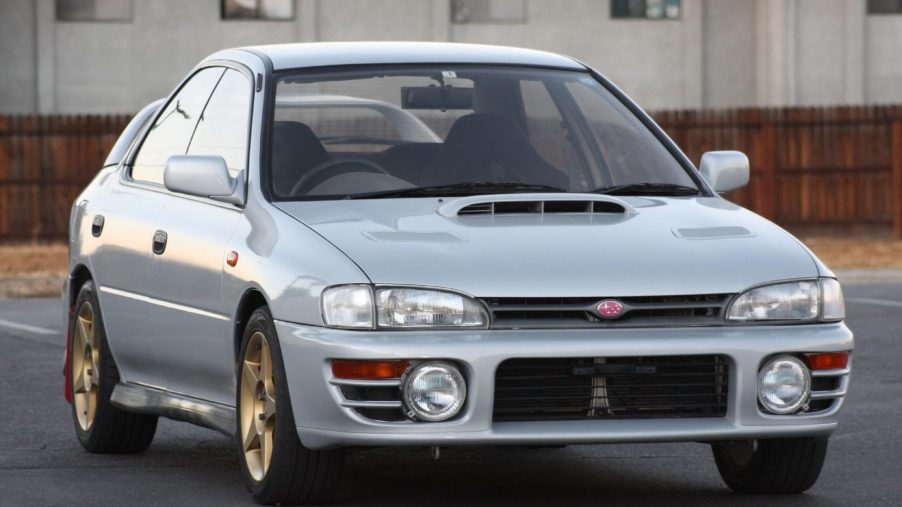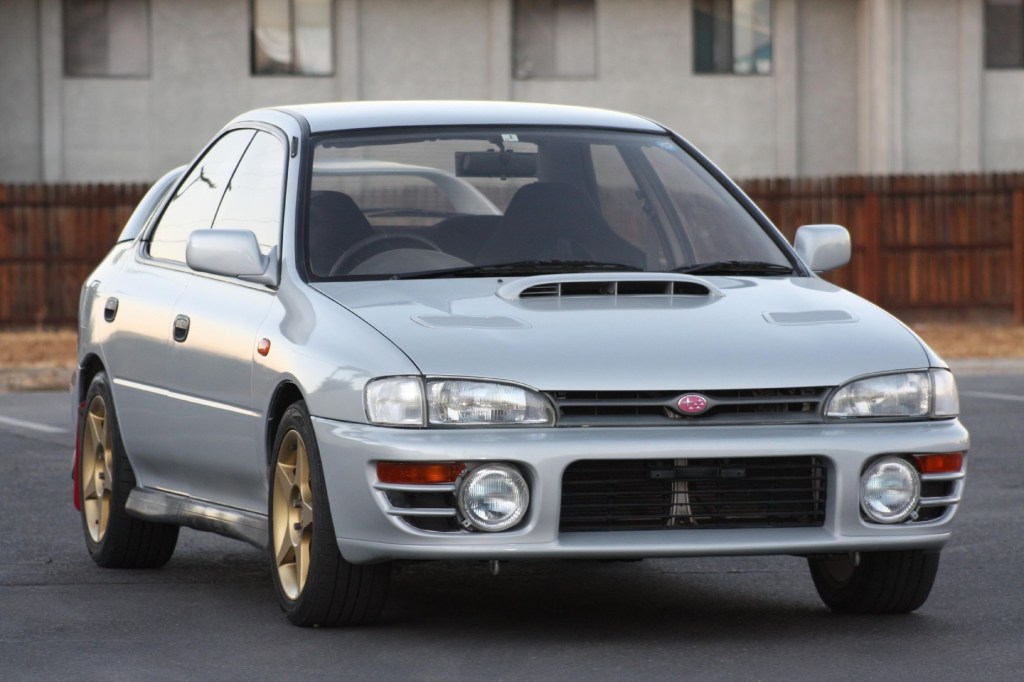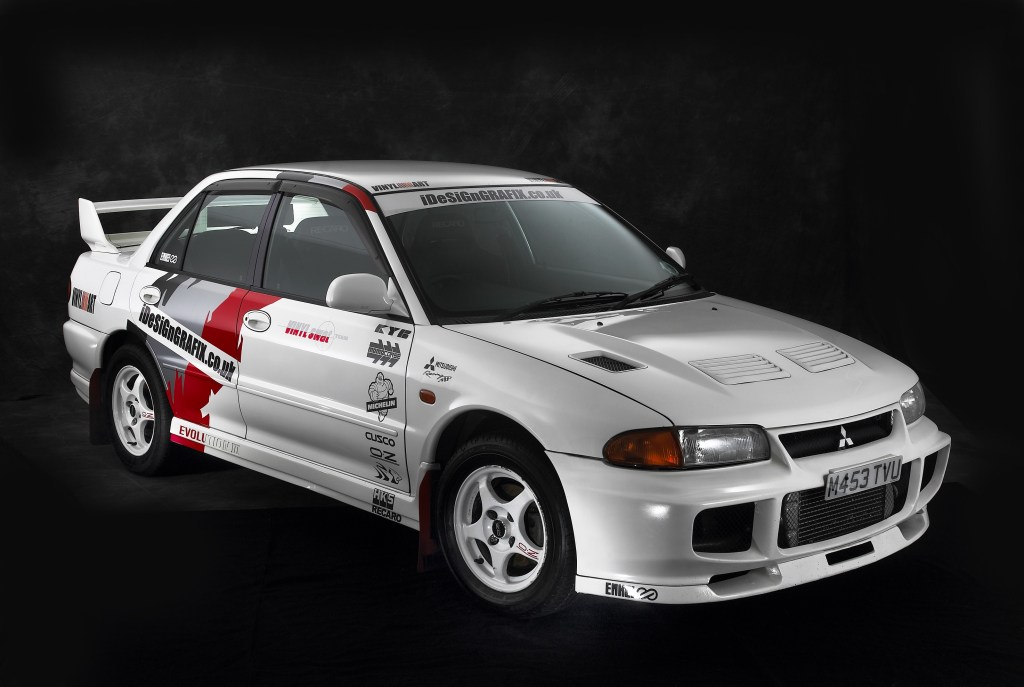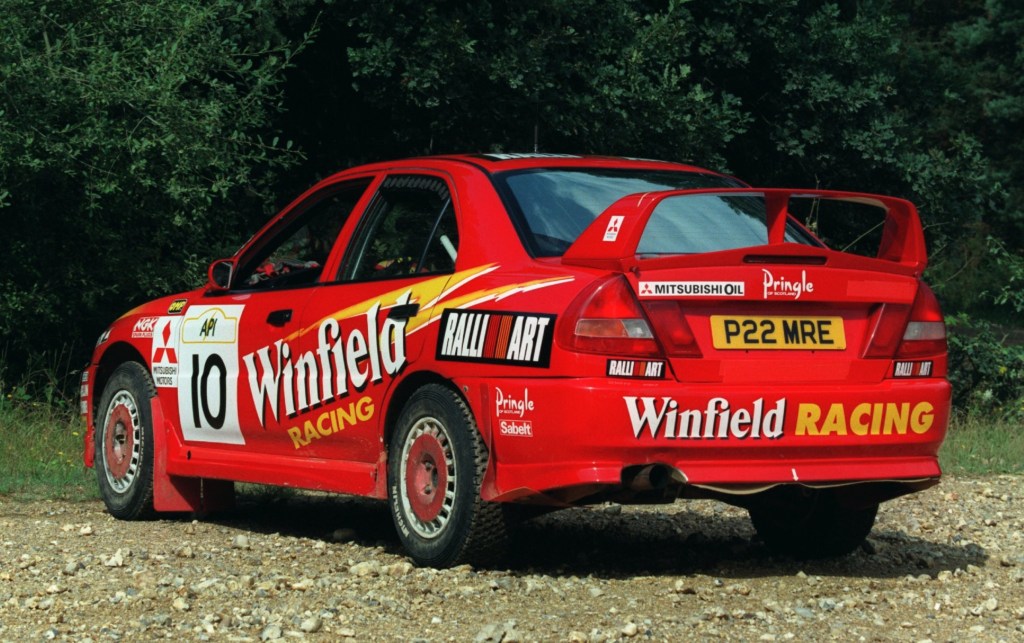
JDM Subaru Impreza WRX vs. Mitsubishi Lancer Evo: Rally Import Showdown
JDM Subaru Impreza WRX vs. Mitsubishi Lancer Evolution comparison highlights:
- The first four Mitsubishi Lancer Evo models are legal to import in 2022, as are the 1993-1997 JDM versions of the GC8 Subaru Impreza WRX
- The Lancer Evo is more performance- and handling-focused, but costs more and requires more careful maintenance
- Although it’s not as sharp, the GC8 WRX is slightly cheaper and easier to live with when you’re not rally-racing
The auto industry is full of rivalries: Mustang vs. Camaro, 911 vs. Corvette, Ferrari vs. Lamborghini. And in the import scene, there’s arguably no more iconic a clash than Subaru WRX vs. Mitsubishi Lancer Evolution. Even years after the Lancer Evo left production, these rally-inspired machines still duke it out on streets, engine dynos, and yes, rally stages. And thanks to the 25-year rule, Americans can finally experience the earliest JDM versions of the Subaru Impreza WRX and Lancer Evo. So, which one should you bring over?
JDM Subaru Impreza WRX vs. Mitsubishi Lancer Evo: which ones can you import in 2022?

Although some states are starting to mess with the rules, you can freely import a car into the US once it’s 25 years old. That’s 25 years after the production date, not the model year, mind you. And that means different things, generation-wise, for WRX and Evo fans.
The first Lancer Evo Mitsubishi brought to the US was the Evo VIII in 2003. However, the first Evo, the Evo I, debuted a decade earlier. And as of this writing, the Evo I, II, III, and IV are legal to import into the US. The Evo V, which launched in January 1998, won’t be legal until 2023.
While you can technically import four Evo generations right now, there’s only one JDM generation of Subaru Impreza WRX available. That’s because the GC8 immediately preceded the first US Impreza WRX, the GD-gen model. And while the iconic 22B STi is still limited to ‘Show or Display’ status until 2023, all 1997-and-earlier GC8s are legal to bring in.
As such, this comparison will focus on the Mitsubishi Lancer Evo I-IV and the pre-1998 GC8 Subaru Impreza WRX models.
GC8 Subaru Impreza WRX vs. Mitsubishi Lancer Evo: performance

| 1993-1997 ‘GC8’ Subaru Impreza WRX, WRX STi | 1993-1997 Mitsubishi Lancer Evo | |
| Engine | 2.0-liter ‘EJ20’ turbocharged boxer four | 2.0-liter ‘4G63T’ turbocharged four-cylinder |
| Horsepower | WRX: 237 bhp (1993), 256 bhp (1995), 276 bhp (1997) WRX STi: 247 bhp (1994), 271 bhp (1995), 276 bhp (1997) | Evo I: 247 hp Evo II: 256 hp Evo III: 266 hp Evo IV: 276 hp |
| Torque | WRX: 224 lb-ft (1993), 228 lb-ft (1995), 242 lb-ft (1997) WRX STi: 228 lb-ft (1994), 235 lb-ft (1995), 253 lb-ft (1997) | Evo I-III: 228 lb-ft Evo IV: 260 lb-ft |
| Transmission | WRX: Five-speed manual, four-speed automatic WRX STi: Five-speed manual | Five-speed manual |
| Curb weight | 2646-2756 lbs (sedan) | Evo I: 2734 lbs Evo II: 2756 lbs Evo III: 2778 lbs Evo IV: 2976 lbs |
| 0-60 mph time | WRX: 5.5 seconds WRX STi: 4.9 seconds | Evo I: 5.1 seconds Evo II: 5.0 seconds Evo III: 4.9 seconds Evo IV: 4.8 seconds |
There might be only one JDM Impreza WRX generation, but Subaru tweaked it practically every year. In addition to more power and torque, Subaru added a wagon body style, briefly removed ventilated rear discs, then reintroduced them bigger than before. Plus, it offered a lightweight, stripped-down Type RA model and, starting in 1994, a version tuned by Subaru Tecnica International. We know it today as the WRX STi (the capital ‘STI’ came later).
Although the Mitsubishi Lancer Evo is heavier than the GC8 WRX, it’s also more powerful and faster. The stripped-down Evo RS models, which are 154-198 pounds lighter, are even faster. Also, while Subaru tweaked the Impreza WRX practically annually, Mitsubishi fettled with the Evo even more, Driving.ca says.
And while the GC8 WRX STi offered some impressive tech for the early ‘90s, the Lancer Evo one-upped it.
JDM Subaru Impreza WRX vs. Mitsubishi Lancer Evo: which has more rally DNA?
Both the JDM Subaru Impreza WRX and the Mitsubishi Lancer Evo are significantly different than their base incarnations. In addition to all-wheel-drive systems with twin limited-slip differentials, they have bigger brakes, more power, better chassis, and sportier suspensions. And while there are still notable differences between the WRX and WRX STI today, the gap was even bigger in the GC8 days.
For example, Subaru gave the GC8 WRX STi a driver-controlled center differential and a heavily-reworked EJ20 as well as even bigger brakes and stiffer shocks. Plus, the first-gen STi has a strut-tower brace, a bigger rear spoiler, Nardi steering wheel, and sport seats.
However, while the WRX gained power and a few features over the years, the Lancer Evo gained all that and more. The Evo II, for example, has a longer wheelbase and wider track than the Evo I, as well as different suspension components. It also has a stiffer chassis, upgraded transmission, and stronger LSD. As a result, it’s more stable and handles better. In addition, while Recaro seats became standard equipment on the Evo II, they only appeared on a few special WRXs.
Meanwhile, the Lancer Evo III creates more downforce than the Evo II thanks to its restyled wing and front air dam. It has a better intercooler and turbocharger, too. Also, it’s the last model built on the original Lancer platform, and the first to earn a WRC Driver’s Championship. And while the Evo IV is the heaviest of the lot, it’s also even more rigid. Plus, its AWD system is more advanced thanks to Active Yaw Control (essentially an active rear differential), a feature that didn’t make it to the US until the Evo X.
JDM Subaru Impreza WRX vs. Mitsubishi Lancer Evo: which drives and handles better?
While their modern counterparts can out-pace them, the JDM Subaru Impreza WRX and Mitsubishi Lancer Evo are still impressive performance cars. Thanks to traction-aiding AWD, turbo power, and sport-tuned suspension, these cars can more than keep up with contemporary M3s and even Lamborghinis, PistonHeads claims. And they still make regular rally appearances in ordinary owners’ hands, tearing up gravel and snow.
Speaking of rallying, Subaru had more success with the Impreza than Mitsubishi did with the Lancer. The Evo won a WRC title, while the Impreza won three—in a row, no less. However, when it comes to the road cars, Mitsubishi’s sedan has a sharper edge.
Admittedly, the Lancer Evo’s faster steering, harsher ride, and cheaper interior materials don’t make it a good commuter. But they make it the sharper, more adjustable sports car; the Evo IV’s AYC raises the handling and grip to true supercar levels. Yet the technology doesn’t get in the way of the fun, PH notes.
On the other hand, the GC8 Subaru Impreza WRX is easier to live with on a daily basis. Yes, it understeers more and isn’t quite as easy to rotate. But its seats are comfier, as is its ride quality. If you’re looking for an import that you can enjoy in normal traffic, the JDM WRX is the better choice.
Which one is more reliable?
Being classic cars at this point, any GC8 Impreza WRX and Lancer Evo I-IV you find will likely have some age-related issues. Furthermore, they’re classic performance icons with a strong tuner association. So, get a pre-purchase inspection to sniff out any potential problems.
Overall, the EJ20 and 4G63T engines are durable powerplants, provided they haven’t been extensively modified. But even so, old gaskets and seals, particularly head gaskets, can cause oil and fluid leaks. And old spark plugs and ignition coils often lead to poor performance. However, the Lancer Evo shopper has a few more things to worry about.
Firstly, the Evo’s drivetrain requires fastidious maintenance, particularly where engine oil, differential, and transmission fluid are concerned. And speaking of oil, you’ll need the synthetic stuff. Secondly, the 4G63 is an interference engine, so if the timing belt snaps, you might be out an engine. And it’s not just mileage you have to track, because the 4G63’s stock balance-shaft belt can snap and break the timing belt, Tuning Pro claims. Basically, service history matters more when buying a Lancer than a WRX.
In addition, the 4G63T had some flaws straight from the factory. The stock lifters, for instance, don’t receive adequate lubrication, which eventually leads to ticking noises and lifter replacement. Also, some engines have six bolts connecting the flywheel and crankshaft, while others have seven. The ‘seven-bolt’ versions are weaker and sometimes cause the crank to wobble, causing shifting problems, weird RPM issues, and even engine sensor damage.
Moving outside the engine, the JDM Lancer Evo can cause more headaches for owners than the GC8 Subaru Impreza WRX because of its extra electronics. On the plus side, both cars’ interiors tend to be pretty durable. However, both the WRX and Evo are known to rust somewhat easily, so check every exterior nook and cranny.
How much do they cost?

The JDM versions of the Subaru Impreza WRX and Mitsubishi Lancer Evo might be classics now, but they’re not necessarily expensive. Rare special-edition models like the 22B STi and the Tommi Makinen Edition notwithstanding, these rally-inspired cars are more affordable than you think.
These days, a good-condition Evo I, II, or III often sells for $10,000-$20,000 on auction sites like Bring a Trailer and Cars & Bids. However, low-mileage stock examples can cost two or three times as much. As the Evo IV just became import-eligible, it’s hard to gauge its market value. Checking over importers like Toprank, though, it seems like $30,000-$40,000 is the current range.
As for GC8 Impreza WRX models, they also often command $10,000-$20,000 auction prices. The GC8 STi falls on the higher end of that range. But the importer premium appears to be lower for JDM WRXs than Evos; think $25,000-$30,000.
Should you import a JDM Subaru Impreza WRX or a Mitsubishi Lancer Evo?

Ultimately, you can’t go wrong with either a JDM Subaru Impreza WRX or Mitsubishi Lancer Evo. Both are fun, grippy, AWD performance cars with more practicality than a coupe. And as long as you don’t go crazy with the mods, they’re reliable and durable. But speaking of mods, both the WRX and Evo enjoy strong aftermarket support and passionate communities.
So, which should you bring over? That depends on your priorities. Whether you get a Lancer Evo I or IV, it’s going to be a more focused, serious sports car. However, it also requires more careful maintenance and won’t be as easy to drive in traffic. As for the GC8 WRX, it’s not quite as sharp, but it’s friendlier and slightly cheaper. Plus, it comes in wagon form.
Follow more updates from MotorBiscuit on our Facebook page.


